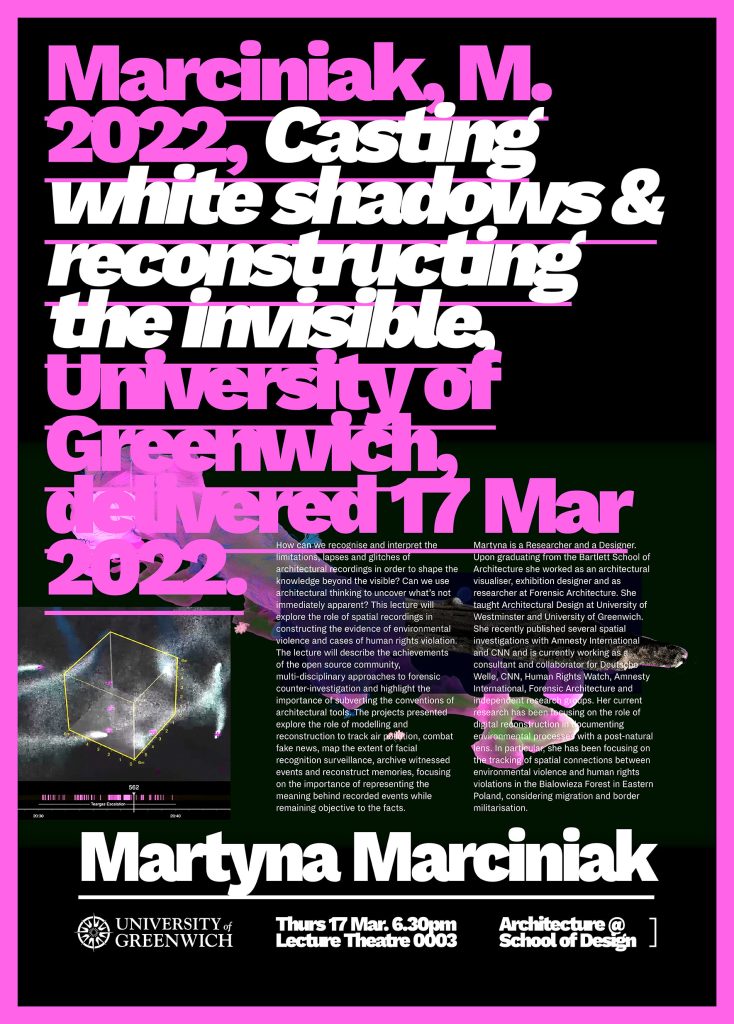Martyna Marciniak Thursday 17th March 2022, 6.30pm Tessa Blackstone Lecture Theatre [0003] How can we recognise and interpret the limitations, lapses and glitches of architectural recordings in order to shape the knowledge beyond the visible? Can we use architectural...
Martyna Marciniak
Thursday 17th March 2022, 6.30pm
Tessa Blackstone Lecture Theatre [0003]

How can we recognise and interpret the limitations, lapses and glitches of architectural recordings in order to shape the knowledge beyond the visible? Can we use architectural thinking to uncover what’s not immediately apparent? This lecture will explore the role of spatial recordings in constructing the evidence of environmental violence and cases of human rights violation. The lecture will describe the achievements of the open source community, multi-disciplinary approaches to forensic counter-investigation and highlight the importance of subverting the conventions of architectural tools. The projects presented will explore the role of modelling and reconstruction to track air pollution, combat fake news, map the extent of facial recognition surveillance, archive witnessed events and reconstruct memories. In addition, the lecture will focus on the importance of digitally representing the meaning behind recorded events, while remaining objective to the facts.
Martyna is a Researcher and a Designer. Upon graduating from the Bartlett School of Architecture she worked as an architectural visualiser, exhibition designer and as researcher at Forensic Architecture. She taught Architectural Design at University of Westminster and University of Greenwich. She recently published several spatial investigations with Amnesty International and CNN and is currently working as a consultant and collaborator for Deutsche Welle, CNN, Human Rights Watch, Amnesty International, Forensic Architecture and independent research groups. Her current research has been focusing on the role of digital reconstruction in documenting environmental processes with a post-natural lens. In particular, she has been focusing on the tracking of spatial connections between environmental violence and human rights violations in the Bialowieza Forest in Eastern Poland, considering migration and border militarisation.








